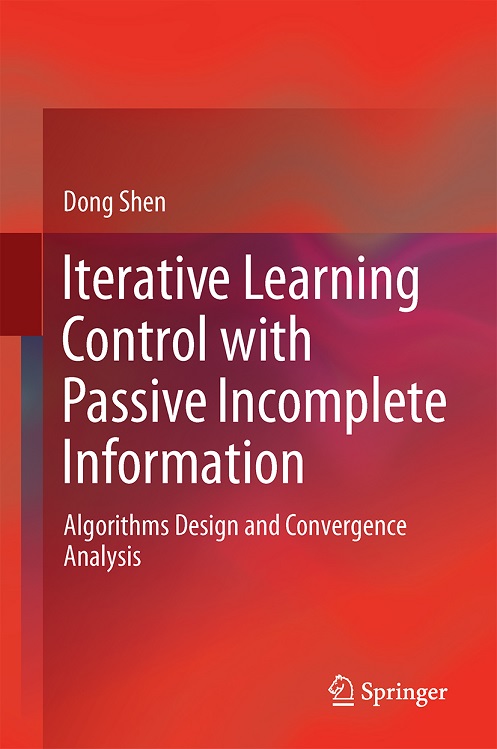Preface
1 Introduction
1.1 Iterative Learning Control—Why and
How
1.2 Basic Formulation of ILC
1.2.1 Discrete-Time Case
1.2.2 Continuous-Time Case
1.3 ILC with Random Data Dropouts
1.3.1 Data Dropout Models
1.3.2 Data Dropout Positions
1.3.3 Convergence Meanings
1.4 ILC with Other Incomplete Information
1.4.1 Communication Delay and Asynchronism
1.4.2 Iteration-Varying Lengths
1.5 Structure of This Monograph
1.6 Summary
References
Part I One-Side Data Dropout
2 Random Sequence Model for Linear Systems
2.1 Problem Formulation
2.2 Intermittent Update Scheme and Its Almost Sure Convergence
2.3 Extension to Arbitrary Relative Degree Case with Mean Square
Convergence
2.3.1 Noise-Free System Case
2.3.2 Stochastic System Case
2.4 Illustrative Simulations
2.5 Summary
References
3 Random Sequence Model for Nonlinear Systems
3.1 Problem Formulation
3.2 Intermittent Update Scheme and Its Convergence
3.3 Successive Update Scheme and Its Convergence
3.4 Illustrative Simulations
3.5 Summary
References
4 Random Sequence Model for Nonlinear Systems with Unknown Control
Direction
4.1 Problem Formulation
4.2 Intermittent Update Scheme and Its Almost Sure Convergence
4.3 Proofs of Lemmas
4.4 Illustrative Simulations
4.5 Summary
References
5 Bernoulli Variable Model for Linear Systems
5.1 Problem Formulation
5.2 Intermittent Update Scheme and Its Almost Sure Convergence
5.3 Successive Update Scheme and Its Almost Sure Convergence
5.4 Mean Square Convergence of Intermittent Update Scheme
5.4.1 Noise-Free System Case
5.4.2 Stochastic System Case
5.5 Illustrative Simulations
5.5.1 System Description
5.5.2 Tracking Performance of both Schemes
5.5.3 Comparison of Different Data Dropout Rates
5.5.4 Comparison of Different Learning Gains
5.5.5 Comparison with Conventional P-Type Algorithm
5.6 Summary
References
6 Bernoulli Variable Model for Nonlinear Systems
6.1 Problem Formulation
6.2 Intermittent Update Scheme and Its Almost Sure Convergence
6.3 Successive Update Scheme and Its Almost Sure Convergence
6.4 Illustrative Simulations
6.5 Summary
References
7 Markov Chain Model for Linear Systems
7.1 Problem Formulation
7.2 ILC Algorithms
7.3 ILC for Classical Markov Chain Model Case
7.4 ILC for General Markov Data Dropout Model Case
7.5 Illustrative Simulations
7.6 Summary
References
Part II Two-Side Data Dropout
8 Two-Side Data Dropout for Linear Deterministic Systems
8.1 Problem Formulation
8.2 ILC Algorithms
8.3 Markov Chain Model of Input Evolution
8.4 Convergence Analysis
8.5 Illustrative Simulations
8.6 Summary
References
9 Two-Side Data Dropout for Linear Stochastic Systems
9.1 Problem Formulation
9.2 Markov Chain of Input Evolution
9.3 Convergence Analysis
9.4 Discussions on Convergence Speed
9.5 Illustrative Simulations
9.6 Summary
References
10 Two-Side Data Dropout for Nonlinear Systems
10.1 Problem Formulation
10.2 Convergence Analysis of ILC Algorithms
10.3 Extensions to Non-affine Nonlinear Systems
10.4 Illustrative Simulations
10.5 Summary
References
Part III General Incomplete Information Conditions
11 Multiple Communication Conditions and Finite Memory
11.1 Problem Formulation
11.2 Communication Constraints
11.3 Control Objective and Preliminary Lemmas
11.4 Intermittent Update Scheme and Its Almost Sure Convergence
11.5 Successive Update Scheme and Its Almost Sure Convergence
11.6 Illustrative Simulations
11.6.1 Intermittent Update Scheme Case
11.6.2 Successive Update Scheme Case
11.6.3 Intermittent Update Scheme Versus Successive
Update Scheme
11.7 Proofs of Theorems
11.8 Summary
References
12 Random Iteration-Varying Lengths for Linear Systems
12.1 Problem Formulation
12.2 ILC Design
12.3 Strong Convergence Properties
12.4 Illustrative Simulations
12.5 Summary
References
13 Random Iteration-Varying Lengths for Nonlinear Systems
13.1 Problem Formulation
13.2 ILC Design
13.3 Convergence Analysis
13.4 Illustrative Simulations
13.5 Summary
References
14 Iterative Learning Control for Large-Scale Systems
14.1 Problem Formulation
14.2 Optimal Control
14.3 Optimal ILC Algorithms and Convergence Analysis
14.4 Illustrative Example
14.5 Summary
References
Appendix
Index


